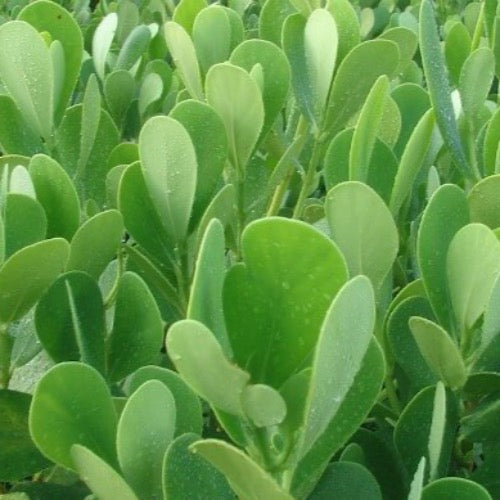If you're dreaming of a picturesque backyard without the constant struggle of watering, fertilizing, and mowing, then artificial turf might be the answer you're looking for. And the best part? With the latest technology, the options for artificial turf have come a long way from the fake, plastic-looking grass of yesteryear. Instead, you can enjoy a lush, green lawn that looks and feels like the real thing, without any of the hassle.
But with so many different types of artificial turf on the market, it can be overwhelming to know which one to choose. That's why we're here to help. We'll guide you through the most important factors to consider to choose the best types of artificial turf for your backyard in 2023. So sit back, relax, and get ready to transform your outdoor space into a beautiful, low-maintenance oasis!

Choosing the Best Types of Artificial Turf for Your Backyard in 2023
To choose the best types of artificial turf for your backyard, one of the most important factors to consider is the quality of the turf. Look for turf that is made from high-quality materials and has been manufactured using the latest technology. High-quality turf should look and feel like natural grass, with individual blades that are soft and pliable to the touch.
Additionally, high-quality turf should be able to withstand the elements and foot traffic, so it doesn't wear down quickly or become damaged. Consider choosing a turf brand that has a reputation for producing high-quality products that stand the test of time.
Consider the Turf Durability
Another critical factor to consider when choosing artificial turf for your backyard is durability. You want a product that will last for years without fading, becoming matted, or frayed.

Look for turf that is designed to withstand heavy foot traffic, exposure to the sun and other weather elements, and is resistant to mold and mildew. Turf with a high blade density and strong backing material will help ensure the longevity of your investment.
Consider Drainage
Artificial turf needs to be able to drain properly to avoid flooding and water buildup. When selecting turf for your backyard, look for products that feature efficient drainage systems.
Good drainage can prevent water from pooling and causing damage to the turf or underlying surfaces. A quality drainage system can also help prevent odors and the growth of bacteria.
Pile Height and Density of the Turf
Pile height and density are important considerations when choosing artificial turf for your backyard. The pile height refers to the length of the individual blades of grass, and the density refers to how close together those blades are. The right combination of pile height and density will depend on your specific needs and preferences.
For example, if you want turf that looks like freshly cut grass, look for a shorter pile height with high density. If you prefer a more natural look with some texture, consider a taller pile height with moderate density.
Color and Texture
Artificial turf comes in a range of colors and textures, so you can choose a product that complements your home and landscape. Consider the style of your home and your backyard's overall aesthetic when choosing turf colors and textures.
For example, if you have a modern home with clean lines, you may prefer turf with a uniform texture and a bright, vibrant color. If you have a more traditional home, you may prefer turf with a natural-looking texture and a more subdued color.
Infill Material of the Artificial Turf
Infill material is an essential component of artificial turf, as it helps to stabilize the blades and keep them upright. Infill material can be made from a variety of materials, including silica sand, crumb rubber, or organic materials. When choosing infill material for your turf, consider factors such as cost, safety, and environmental impact.
Crumb rubber, for example, is a popular infill material but has come under scrutiny due to its potential health risks. Silica sand is an affordable and safe option but can be less comfortable to walk on than other infill materials.

Types of Artificial Turf for Backyard: Best in 2023
- Nylon Turf
- Polypropylene Turf
- Polyethylene Turf
- Hybrid Turf
Nylon Turf: It is one of the most durable types of artificial turf available for backyard use. It is a synthetic material that is known for its excellent resiliency, making it resistant to wear and tear, heavy foot traffic, and harsh weather conditions.
Nylon turf also has good resistance to fading, which means it will maintain its vibrant green color even after prolonged exposure to the sun. However, it can be more expensive than other types of artificial turf.
Polypropylene Turf: Polypropylene turf is another popular option for backyard use. It is known for being an affordable and low-maintenance choice, making it a great option for those on a tight budget.
Polypropylene turf is also resistant to UV rays, which helps prevent fading. However, it is not as durable as other types of turf and can be susceptible to damage from heavy foot traffic and weather elements.
Polyethylene Turf: Polyethylene turf is a common choice for homeowners because of its realistic appearance and soft texture. It is a popular choice for backyard use due to its durability and resistance to fading, making it a low-maintenance option. Polyethylene turf is also ideal for families with pets, as it is less likely to cause irritation or injury to animals.
Hybrid Turf: It is a relatively new type of artificial turf that combines the best features of natural grass and synthetic turf. It is a combination of natural grass fibers and synthetic turf backing, which gives it a more realistic look and feel compared to other types of artificial turf.
Hybrid turf is also more durable than natural grass and requires less maintenance. However, it is more expensive than other types of artificial turf, and it may not be suitable for all backyard environments.
Maintenance Tips for Artificial Turf for Your Backyard Landscape
Artificial turf is a great investment for your backyard landscape, but like any outdoor surface, it does require some maintenance to keep it in top condition. Below are 6 maintenance tips for artificial turf in your backyard:
Debris such as leaves, twigs, and other materials can accumulate on artificial turf over time, leading to discoloration and damage. Regularly remove debris by sweeping or using a leaf blower to keep your turf looking clean and healthy.
Brushing your artificial turf regularly can help keep the fibers upright, preventing them from matting down and reducing the lifespan of your turf. Use a soft-bristled brush and make sure to brush in different directions to help the fibers stand up.
Occasionally rinsing your artificial turf with water can help remove any built-up dirt or debris that has become embedded in the fibers. Use a garden hose to rinse the turf thoroughly and allow it to dry naturally.
If you notice stains or spills on your artificial turf, address them as soon as possible to prevent them from becoming permanent. Use a mild detergent and water to spot clean the affected area, and rinse with water to remove any soap residue.
Artificial turf is designed to be durable and resistant to wear and tear, but it is still important to keep pets and children off the turf as much as possible. Heavy foot traffic can lead to matting down and damage to the fibers, reducing the lifespan of your turf.
Over time, artificial turf can become dirty and require a deeper cleaning. Consider hiring a professional to perform this task, as they have the tools and experience needed to clean the turf thoroughly without causing damage.
By following these maintenance tips, you can keep your artificial turf looking and performing its best for years to come.

The Bottom Line: Types Of Artificial Turf for Backyard
In conclusion, artificial turf is a great investment for your backyard landscape. It offers a range of benefits, including low maintenance, durable, and environmentally friendly. Artificial turf can also save you time and money in the long run, as you won't need to water, fertilize, or mow it like you would with natural grass.
Overall, artificial turf is a great investment for any backyard, providing a beautiful and functional space for you and your family to enjoy. With proper maintenance and care, your artificial turf can last for many years and continue to enhance the beauty of your outdoor space.
To read more blogs, click here

